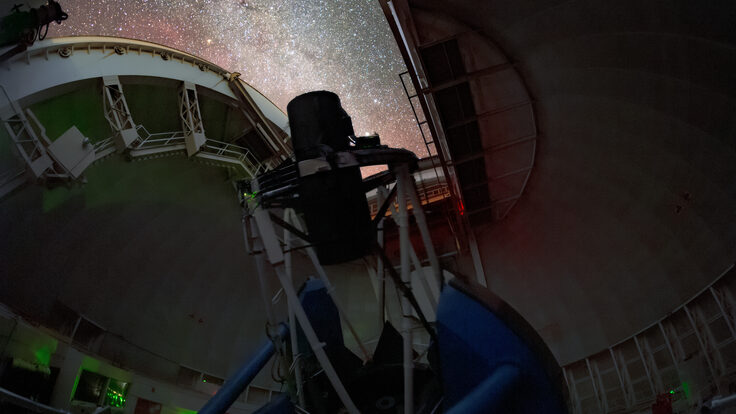 |
|
Photo courtesy of NASA |
Gamma-rays inspire brass quintet
When you hear the descending flurry of 16th notes in the trumpets, you know the gamma rays are coming. They speed toward the detector in the Gamma-ray Large Area Space Telescope in chromatically harmonized notes. The rays split with a sharp accent, and an electron and positron speed away from each other in the GLAST detector, their movement conveyed by short bursts of notes sliding in opposite directions along the scale.
That's how Nolan Gasser interprets the science of GLAST in his original composition GLAST Prelude for Brass Quintet, op. 12, which made its debut at the June 9 pre-launch party in Cocoa Beach, Florida. The piece can be rhythmically complex when evoking the wavelengths of the electromagnetic spectrum, or simple and beautiful when depicting GLAST's elegant orbit. A video created by the NASA Goddard Television and Multimedia Group accompanies the music. "The visuals," Gasser explains, "allow for that rare mix of an aesthetic experience with scientific appreciation and education."
The gamma-ray telescope, designed and constructed in part at Stanford Linear Accelerator Center, will be the first to survey the entire sky every day searching for the most energetic form of radiation in the universe. Until about a year ago, Gasser knew almost nothing about the science related to GLAST. He is a classically trained composer and artistic director of the Classical Archives, an online classical music site. Then his friend and Classical Archives CEO Pierre Schwob, a science enthusiast who is one of the major donors to the Kavli Institute for Particle Astrophysics and Cosmology, commissioned him to compose a piece for the GLAST launch and mission.
Gasser spent months immersing himself in scientific literature. He traveled to the NASA Goddard Flight Center to meet with the mission's project scientist, Steve Ritz, and deputy scientist, Neil Gehrels, and learn about the history, mission, and expectations of GLAST.
The art, Gasser says, is an invitation to the science, a doorway through which the public, and hopefully the press and the government, will enter the world he has become so passionate about.
Calla Cofield
Click here to download the pdf version of this article.






